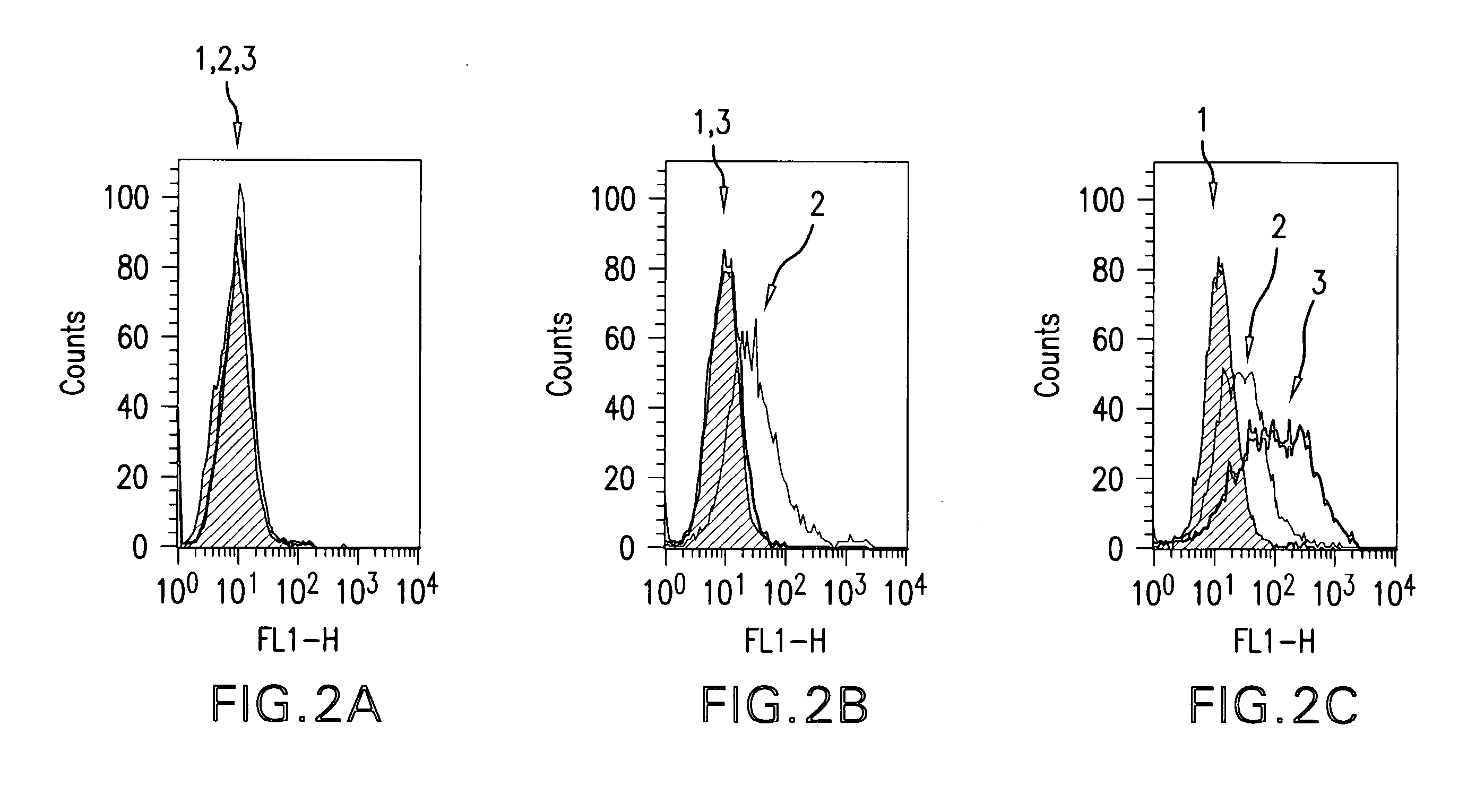Igf-1r specific antibodies useful in the detection and diagnosis of cellular proliferative disorders
a specific antibody and cellular proliferative technology, applied in the field of biotechnology, can solve the problems of insufficient sensitive and specific detection of most types of early-stage cancer, slow and frustrating progress in understanding the progression of cancer and early detection, and achieve the effect of high affinity
- Summary
- Abstract
- Description
- Claims
- Application Information
AI Technical Summary
Benefits of technology
Problems solved by technology
Method used
Image
Examples
example-1
Generation and Selection of the Murine Monoclonal Antibody (MAb)
[0374]With the aim of generating antibodies, particularly monoclonal antibodies specifically directed against IGF-IR that do not cross-react with IR, a protocol comprising 4 screening steps was performed.
[0375]The protocol comprised:[0376]immunizing mice with the human recombinant IGF-IR, in order to generate hybridomas,[0377]screening the cell culture supernatants by ELISA on the human recombinant protein used for immunization,[0378]testing all the positive supernatants of hybridomas resulting of this first ELISA on the native receptor overexpressed on MCF-7 tumor cells,[0379]evaluating the supernatants of hybridomas positive in the two first screenings in terms of differential recognition of IGF-IR versus IR on insect cells infected with baculoviruses respectively expressing either IGF-IR or IR.
[0380]The various steps outlined above are detailed herebelow.
[0381]For the immunization stage, mice were injected subcutaneo...
example 2
Western Blot Experiments
Material and Methods
Proteins and Membrane Extract
[0385]Recombinant human insulin receptor (IR) and insulin-like growth factor 1 receptor (IGF-1R) extracellular domains (ECD) were purchased from R&D Systems (Lille, France). Membrane extracts of NIH 3T3 cells overexpressing IGF-1R were obtained as detailed here below. Briefly, after cell lysis in 10 mM Tris-HCl pH 7.5 buffer, whole cell membranes were collected by centrifugation at 105,000 g for 1 h at 4° C. The pellet was re-suspended in 50 mM Tris-HCl pH 7.5 buffer containing 150 mM NaCl, 0.5% IGEPAL, 0.5% Triton X-100, 0.25% sodium deoxycholate and protease inhibitors, and stirred overnight at +4° C. Insoluble material was separated from the soluble extract containing hIGF-1R by centrifugation at 10,000 g for 10 mM at +4° C. Soluble membrane extracts were analyzed for protein concentration by the bicinchoninic assay.
Electrophoresis and Western Blot
[0386]Proteins were analyzed by SDS-PAGE electrophoresis on C...
example 3
Cloning Strategy of Genes Coding for the Variable Regions of the Heavy and Light Chains of the Monoclonal Antibody (mAb) 12B1
[0389]Total RNA was extracted from 107 cells of hybridomas secreting the antibody 12B10 by using the TRI REAGENT™ (according to the instructions given by the supplier, SIGMA, T9424). The first cDNA strand was synthesized with the aid of the ‘First strand cDNA synthesis’ kit of Amersham-Pharmacia (#27-9621-01, according to the instructions given by the supplier). For the two chains, the reaction was primed with the oligonucleotide Not I-d(T)18, comprised in the Kit.
[0390]The cDNA:mRNA hybrid thus obtained was used for the amplification by PCR of the genes coding for the heavy and light chains of the 12B1 mAb. The PCR were carried out by using a combination of oligonucleotides specific for the heavy and light (Kappa) chains of mouse immunoglobulins. The primers corresponding to the 5′ ends hybridize in the region corresponding to the signal peptides (Table 2 for...
PUM
| Property | Measurement | Unit |
|---|---|---|
| Fraction | aaaaa | aaaaa |
Abstract
Description
Claims
Application Information
 Login to View More
Login to View More - R&D
- Intellectual Property
- Life Sciences
- Materials
- Tech Scout
- Unparalleled Data Quality
- Higher Quality Content
- 60% Fewer Hallucinations
Browse by: Latest US Patents, China's latest patents, Technical Efficacy Thesaurus, Application Domain, Technology Topic, Popular Technical Reports.
© 2025 PatSnap. All rights reserved.Legal|Privacy policy|Modern Slavery Act Transparency Statement|Sitemap|About US| Contact US: help@patsnap.com



